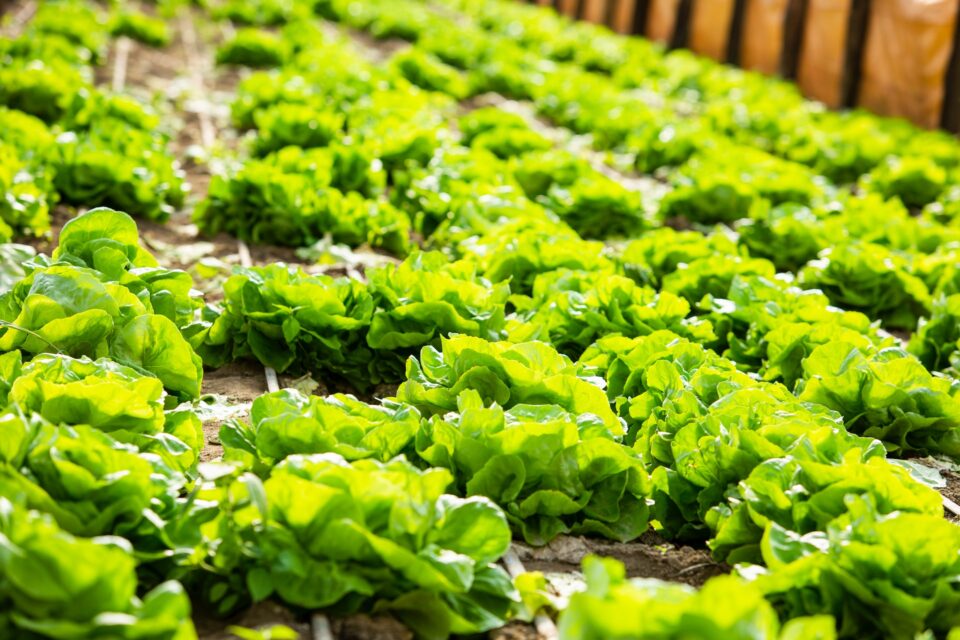Leaf vegetables are also called leafy greens, salad greens, pot herbs, vegetable greens. These are plant leaves eaten as a vegetable, sometimes accompanied by tender petioles and shoots. Although they come from a very wide variety of plants, most share a great deal with other leaf vegetables in nutrition and cooking methods.
Nearly one thousand species of plants with edible leaves are known so far. Leaf vegetables most often come from short-lived herbaceous plants, such as lettuce and spinach. Woody plants of various species also provide edible leaves.
Leaf vegetables contain many typical plant nutrients, but since they are photosynthetic tissues, their vitamin K levels are particularly notable. Phylloquinone, the most common form of the vitamin, is directly involved in photosynthesis.
Popular sources
- Arugula (rocket)
- Bok choy (Chinese chard)
- Collard greens (collards)
- Dandelion greens
- Kale
- Cabbage
- Beet Greens
- Watercress
- Romaine Lettuce
- Swiss Chard
- Arugula
- Endive
- Bok Choy
- Turnip Greens
Benefits of green leafy vegetables
Right from the ancient days, leafy greens have been an important portion of the daily diet. Being power-packed with a variety of vitamins and minerals makes them a mandatory addition to every healthy diet plan.
The fat and sugar content of green leafy vegetables is minimal, which also makes them fit for a weight loss diet.

They also protect your body by strengthening the immune system, slowing down signs of aging, and preventing heart diseases, high blood pressure, and cancers.
Also Read: How to nourish your brain with healthy food?
The nutritional content of green vegetables
- Packed with Vitamins– All leafy greens have an abundant store of nature’s vitamins. However, kale, spinach, moringa, and cabbage are known for their superior vitamin content. You get a good amount of vitamin A, vitamin K, vitamin E, vitamin C, beta-carotene, folate, vitamin B1, B2, B3, B5 and, B6 from these vegetables.
- High mineral content– Minerals like iron, magnesium, potassium, zinc, calcium, phosphorus, and sodium can be added naturally to your diet by eating green leafy veggies. They help to maintain the daily requirement and overcome the deficiency of dietary minerals by providing an adequate amount of minerals in every bite.
- Rich in dietary fibers– Green leaves have good fiber content which makes you feel satisfied after you consume them. Fiber also provides various other health benefits.
- Low-fat content– These leafy greens save you from consuming fats and lipids as they have nearly zero fat content.
These veggies should be a compulsory part of your routine diet. They play an important role by helping you to recover from certain health conditions and illnesses like poor eyesight, mineral deficiencies, poor immunity, constipation, and even certain heart diseases.
Leafy green vegetables help with your daily nutrient intake because they contain a multitude of macro and micronutrients that are necessary for the body. Similarly, here are some more health benefits of adding leafy greens to your regular diet.

Calories
One of the biggest benefits of consuming leafy green vegetables is that they are extremely low in calories when compared to other foods. Despite being low in calories they are often dense in nutrients, which is why they are a preferred food item in a weight loss diet.
Vitamin K
Leafy green vegetables are added to a weight loss diet because they contain a nutrient known as Vitamin K. This fat-soluble vitamin is extremely helpful in stimulating weight loss.
Moreover, recent research also suggests that Vitamin K can help reduce inflammation, help combat diabetes, helps reduce plaque formation in the arteries, and can even help delay the onset of bone ailments like osteoporosis.
Disease Prevention
Since leafy green vegetables are full of vitamins and minerals that are needed to both boost the immune system as well as maintain an overall healthy body, they have been known to help prevent certain diseases as well.
For example, mineral deficiencies like iron deficiency (anaemia), poor eyesight, weight troubles, signs of ageing, poor immunity, constipation, blood clotting, folate deficiency, weak bones, cancer, heart diseases, and high cholesterol.

Macronutrients
While leafy green vegetables may only be popular for being sources of vitamins and minerals (micronutrients), many of them even have sufficient quantities of macronutrients as well. Some leafy green vegetables have complex carbohydrates, fiber, protein, and even minute traces of fat.
For example, spinach being a classic dark green leafy vegetable provides 1 g of carbohydrate and 1 g of protein in each cup of serving.
Micronutrients
Green leafy vegetables are best known for being rich sources of micronutrients and this is one of the reasons most people do not add them sufficiently to their daily diet.
Although micronutrients may be required in lower quantities in the body, they play a major part in helping boost the immune system and several other functions of the body. Green leafy vegetables contain essential micronutrients like beta-carotene, lutein, and zeaxanthin. These can help prevent damage to the cells of our body and even enhance eyesight.
Apart from these, green leafy vegetables are highly effective and beneficial for healthy skin and hair.
How to include green leafy vegetables in the diet?
- Salads. Put greens that people can eat raw, such as spinach and beet greens, into a bowl; add some vinaigrette or lemon juice; and eat them as a salad.
- Healthy bowls. Make a healthy bowl by adding greens to a bowl full of proteins, fruits, and whole grains.
- Wraps. Combine romaine, cabbage, or Swiss chard leaves with other ingredients as a filling for a wrap.
- Soups. Some greens, such as bok choy and Swiss chard, are soup staples. Stir chopped greens into soups or stews during the last few minutes of cooking.
- Pizza. Replace meats and processed toppings with greens to make a healthier pizza.
- Sautes and stir-fries. Toss greens together with noodles, vegetables, nuts, and seafood.
- Pesto. Use leafy greens in place of basil as the staple green in pesto.
- Juice. Add some greens, such as kale and parsley, when making juice for extra nutrients and a pungent kick without the fullness that smoothies can cause.
- Sandwich. Aside from the usual tomatoes, pickles, and avocados, people can add greens like lettuce, arugula, and spinach to sandwiches.
- Sauces. People can chop or puree leafy greens and add them to sauces. For example, people can blend vegetables such as beet greens and add them to marinara sauce.
- Smoothies. Combine greens like spinach with other healthy fruits and vegetables such as beets, carrots, cucumber, and ginger to make a healthy green drink.
- Add-ons. Greens can add extra flavor to meals. People can cook them in many ways, such as by grilling, steaming, boiling, braising, and stewing.
Conclusion
Eating green vegetables every day is important for health. They provide essential vitamins, minerals, and other nutrients, such as antioxidants and fiber.
Research consistently shows that people who eat at least 5 servings of green vegetables a day have the lowest risk of many diseases, including cancer and heart disease.




